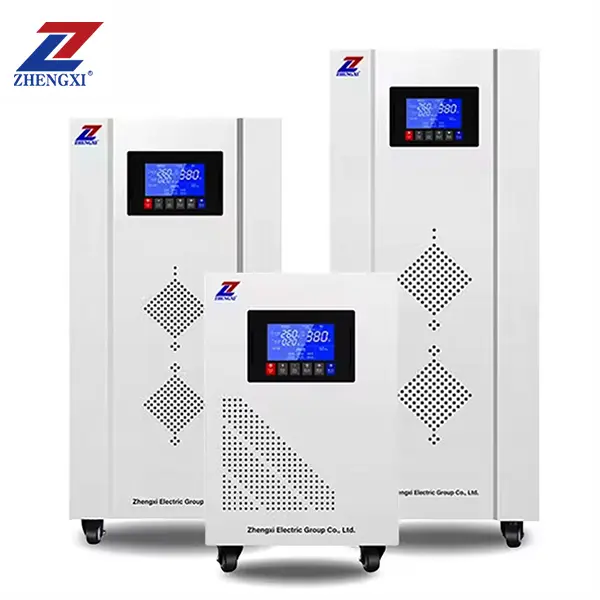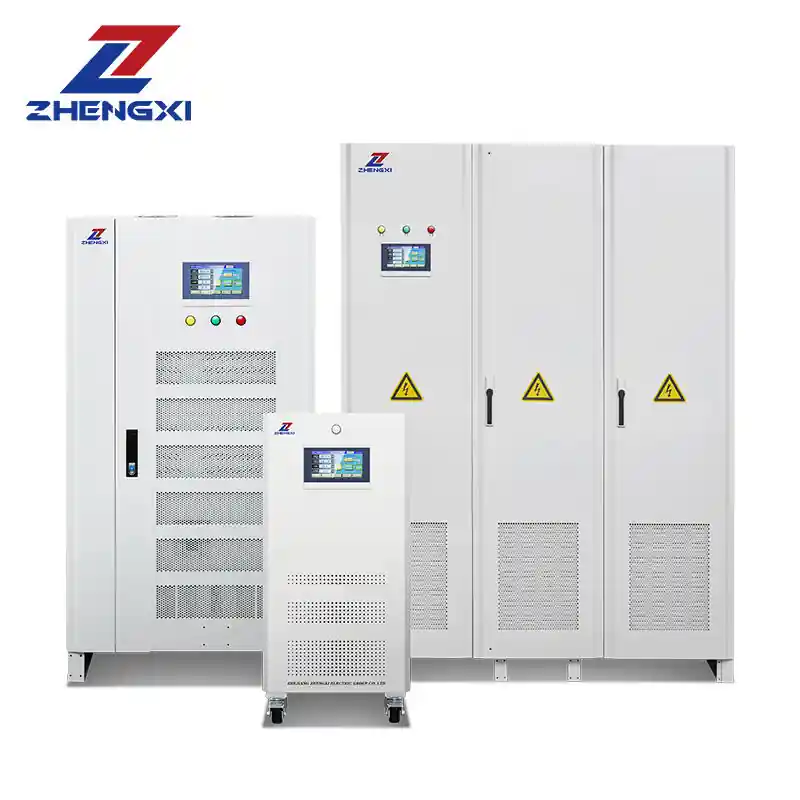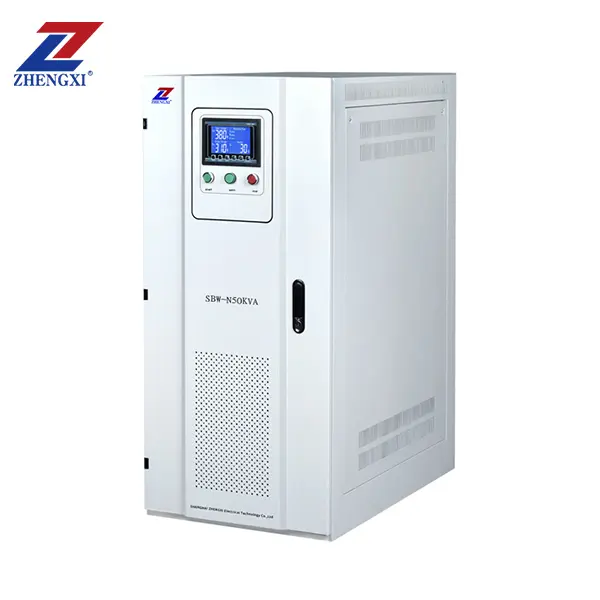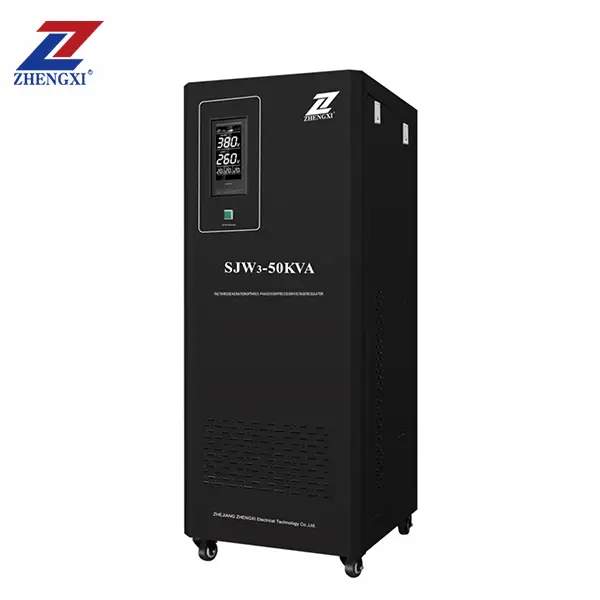Dans les immeubles de grande hauteur, les ascenseurs exigent non seulement une résistance mécanique, mais aussi une stabilité électrique à toute épreuve. A stabilisateur de tension du servo offre une correction au niveau de la milliseconde contre les baisses, les hausses et les pointes de tension, garantissant que les commandes et les circuits de contrôle sensibles des ascenseurs reçoivent toujours une alimentation propre et cohérente. En intégrant un stabilisateur dédié, les gestionnaires d'installations peuvent garantir la sécurité des passagers, réduire les temps d'arrêt et prolonger la durée de vie des équipements.
Pourquoi les ascenseurs ont-ils besoin d'une stabilisation de tension dédiée ?
Les ascenseurs représentent l'un des systèmes les plus critiques des bâtiments modernes, transportant chaque jour des centaines de passagers sur des dizaines d'étages. Malgré leur conception mécanique robuste, l'électronique de commande des ascenseursLes moteurs, les entraînements, les moteurs et les circuits de sécurité nécessitent tous un système de contrôle de la qualité. une alimentation stable et de haute qualité. Cependant, la tension du service public reste rarement dans des limites parfaites. Les fluctuations du réseau, les changements de charge et les événements transitoires peuvent être à l'origine de cette situation :
- Sags (sous-tension) qui font caler les moteurs et déclencher les entraînements.
- Les houles (surtension) qui sollicitent l'isolation et grillent les cartes de contrôle
- Transitoires (pointes) qui endommagent les microprocesseurs sensibles
Un ascenseur AVR-commonly called a stabilisateur de tension pour ascenseur-agit comme un tampon intelligent. Il s'agit d'une mémoire tampon intelligente. en permanence détecte la tension entrante, la compare à une référence prédéfinie, et instantanément corrige les écarts afin que l'ascenseur reçoive toujours une puissance propre et constante (généralement entre ±1% et ±3% par rapport à la valeur nominale).
2. Principales caractéristiques et avantages de l'application
2.1 Technologies avancées de régulation de la tension
- Changement de robinet à l'état solide
- Utilise des IGBTs/SCRs pour commuter les prises du transformateur en quelques millisecondes, offrant une correction quasi-instantanée sans usure mécanique.
- Variac commandé par servomoteur
- Utilise un autotransformateur motorisé pour sans étape Ajustement de la tension ; idéal pour des variations d'entrée extrêmement larges (±30-40%).
- Double conversion (type onduleur en ligne)
- Convertit AC→DC→AC pour fournir l'onde sinusoïdale la plus pure, isolant la plupart des perturbations (idéal pour les installations ultra-sensibles).
2.2 Suite de protection intégrée
- Surtension et sous-tension: By-pass ou arrêt automatique lorsque l'entrée dépasse la plage de compensation
- Suppression des surtensions: Absorbe les pointes et les transitoires de commutation induits par la foudre
- Surchauffe et surintensité: Prévient la surchauffe interne et les surcharges
- Détection de perte de phase/déséquilibre: Arrêt de l'opération en cas de défaillance d'une phase ou de déséquilibre important.
2.3 Construction robuste et conformité
- Valeurs nominales des boîtiers: Options IP20-IP54 pour les salles des machines intérieures, IP65 pour les environnements humides/industriels
- Certifications: CE, UL 508A, IEC 62040-3, RoHS garantissent la conformité aux réglementations internationales.
- Large gamme de températures ambiantesTempérature d'utilisation : -10 °C à +50 °C avec chauffage optionnel pour les endroits où la température est inférieure à zéro.
2.4 Scénarios d'application typiques
- Ascenseurs d'hôpitaux: Protège les circuits de sécurité des personnes et les entraînements de qualité médicale
- Tours résidentielles de grande hauteur: Assure la fluidité du flux de passagers lors des pics d'activité sur le réseau
- Complexes commerciaux: Empêche les déclenchements intempestifs lors du démarrage ou de l'arrêt du système de chauffage, de ventilation et de climatisation.
- Projets de modernisation: Stabilise les infrastructures vieillissantes avec un minimum de temps d'arrêt
3. Spécifications techniques et aperçu comparatif
| Spécifications | Série EL-AVR de SUNWAY | Servo typique Variac AVR | AVR à double conversion en ligne |
|---|---|---|---|
| Plage de capacité | 10-200 kVA | 5-150 kVA | 10-100 kVA |
| Plage de tension d'entrée | ±25% de 380 V (285-475 V) | ±30-40% de 380 V | ±15-20% de 380 V |
| Régulation de la sortie | ±1% | ±1-3% | ±0,5-1% |
| Temps de réponse | <1 cycle CA (16 ms à 60 Hz) | 50-100 ms | <0,5 cycle (<8 ms) |
| Efficacité | ≥ 97% | ≥ 96% | 90-94% |
| Distorsion de la forme d'onde (THD) | <2% | <1% | <0,5% |
| L'isolement | Transformateur intégré en option | Isolation totale par variac | Isolation totale standard |
| Communications | Modbus TCP/IP, RS-485 | Pas de communication standard | SNMP, Modbus, interface web |
| Niveau de bruit typique | <50 dBA | Bourdonnement audible du moteur (~60 dBA) | Ventilateur de refroidissement (~55 dBA) |
Pourquoi SUNWAY EL-AVR excelle-t-elle ?
- Le plus rapide protège même contre les micro-interruptions.
- Le plus élevé minimise la chaleur perdue dans les salles de machines confinées.
- Flexible Les options de communication s'intègrent parfaitement à la GTB/SCADA.
4. Différenciation : Ce qui distingue SUNWAY
| Aspect | SUNWAY EL-AVR (état solide) | Servomoteur Variac | Ferrorésonant (CVT) |
|---|---|---|---|
| Usure mécanique | Aucun | Les brosses et le moteur s'usent avec le temps | Pas de pièces mobiles, mais un noyau en fer lourd |
| Vitesse et précision | Précision de l'ordre de la milliseconde, inférieure à 1% | Plus lent (50-100 ms), précision ±1-3% | Rapide (<20 ms), distorsion modérée |
| Taille et poids | Compact pour kVA nominal | Encombrant en raison de la taille du moteur et du bobinage | Très lourd, grand encombrement |
| Efficacité | ≥ 97% | ≈ 96% | ≈ 85-90% |
| Qualité de la forme d'onde | Excellent (THD <2%) | Excellente qualité électrique | Distorsion "flat-topping" sous charge |
| Maintenance | Nettoyage du filtre et mise à jour du micrologiciel | Remplacement périodique des brosses | Inspection de base, entretien minimal |
| Meilleur cas d'utilisation | Ascenseurs modernes équipés d'un variateur de fréquence et d'un système de gestion des bâtiments piloté par les données | Grandes variations et systèmes hérités | Niche - rarement utilisée dans les ascenseurs |
5. Conseils d'achat et guide de sélection
Choisir l'idéal régulateur de tension de l'ascenseur implique ces étapes critiques :
- Calculer les besoins en charge (kVA)
- Moteur(s) d'ascenseur, électronique d'entraînement, éclairage et accessoires.
- Ajouter un 30% marge de sécurité pour les courants d'appel (par exemple, 5-7× démarrage du moteur).
- Définir le profil de tension d'entrée
- Utilisez les données historiques ou un enregistreur de qualité d'énergie pour enregistrer les tensions minimales et maximales.
- Choisissez un stabilisateur dont plage de compensation couvre entièrement les oscillations observées.
- Déterminer la précision requise pour la régulation
- Les commandes critiques et les variateurs de vitesse exigent souvent ±1% stabilité.
- Décider du temps de réponse
- Les unités rapides < 16 ms évitent les déclenchements intempestifs ; les types plus lents peuvent suffire pour les commandes moins sensibles.
- Évaluer les conditions environnementales
- Pour les salles des machines poussiéreuses ou humides, préciser IP23/IP54.
- Pour les climats froids, ajoutez des options de chauffage intégrées.
- Prévoir le contournement et la redondance
- A by-pass manuel ou automatique assure le fonctionnement de l'ascenseur pendant la maintenance.
- Pour les sites à haute disponibilité, envisagez des régulateurs à double canal.
- Évaluer les besoins en matière de communication et de suivi
- Si des alertes à distance et l'enregistrement de données sont nécessaires, assurez-vous que Modbus TCP/IP ou SNMP le soutien.
- Vérifier la conformité et la garantie
- Rechercher CE, UL, CEI et au moins un 12 mois garantie complète avec assistance technique 24/7.
6. FAQ
Q1 : Puis-je installer un stabilisateur de tension pour ascenseur sur plusieurs ascenseurs ?"
A : Oui. En fonction de la configuration du site, vous pouvez installer un seul stabilisateur central en amont d'un panneau de distribution alimentant plusieurs ascenseurs de faible hauteur (si la charge totale est ≤ kVA). Sinon, des stabilisateurs individuels par ascenseur assurent une protection dédiée et simplifient la maintenance.
Q2 : Le stabilisateur supportera-t-il les surtensions au démarrage du moteur ?
A : Les unités SUNWAY EL-AVR sont classées pour 10× le courant de démarrage jusqu'à 300 ms. Le stabilisateur doit toujours être dimensionné de manière à ce que sa puissance en kVA corresponde au courant du rotor bloqué du moteur de l'ascenseur, ainsi qu'à toute charge d'éclairage ou d'accessoire concomitante.
Q3 : Quelle est la fréquence des opérations de maintenance ?
A :
- Trimestrielle: Inspecter les filtres à air, nettoyer les bouches d'aération, vérifier le couple de serrage des bornes.
- Tous les deux ans: Test du temps de réponse, vérification des seuils d'alarme
- Annuellement: Mise à jour du micrologiciel, test du banc de charge complet
Un entretien préventif régulier permet d'assurer la continuité de la EEAT-expertise, l'autorité, fiabilité-dans la protection de l'alimentation de votre ascenseur.
7. Conclusion : Préserver la mobilité verticale
Une qualité supérieure stabilisateur de tension pour ascenseur n'est pas un complément optionnel, c'est un composant essentiel qui :
- Protège l'électronique d'entraînement et les circuits de sécurité complexes
- Élimine déclenchements intempestifs et piégeage des passagers
- Prolonge la durée de vie des systèmes de contrôle coûteux
- Réduit les coûts de maintenance et les temps d'arrêt non planifiés
- Veille renforcer la conformité et la confiance des passagers
Chez SUNWAY, notre mission est de fournir des AVR pour ascenseurs qui combinent régulation à semi-conducteurs à la pointe de la technologie, conception mécanique robusteet surveillance numérique complète-Certifié ISO9001, CE et UL.
Prêt à améliorer la fiabilité de votre ascenseur ?
Contactez nos spécialistes pour une étude de site gratuite et une proposition personnalisée, et découvrez le retour sur investissement tangible d'une énergie stable et propre dans les transports verticaux.








